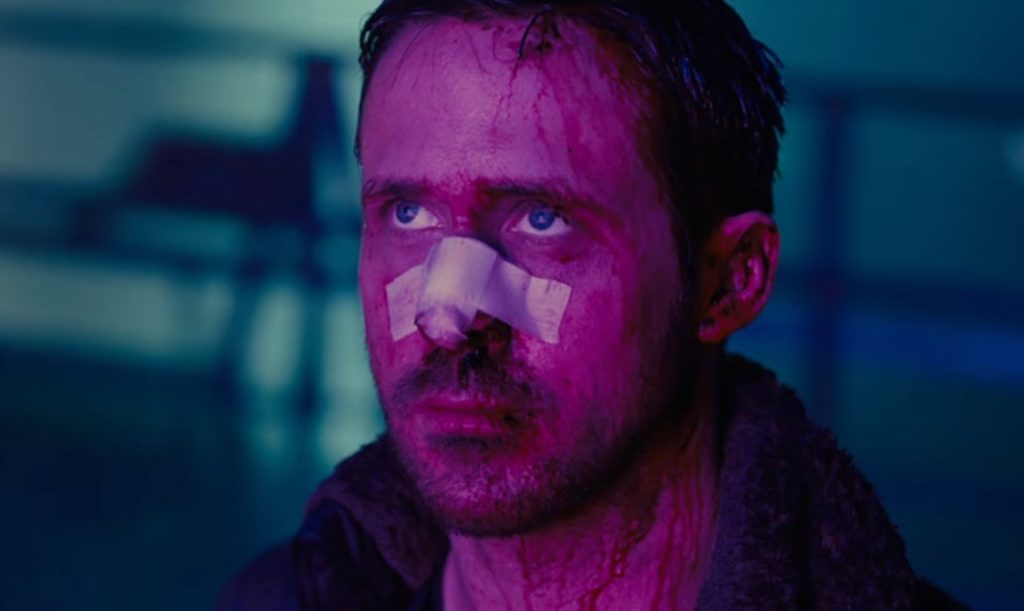Set thirty years after the events of the original, Blade Runner 2049 sees the return of a dystopian, perpetually pissing down California, backed by a score of synthy farts.
Any worries I had about this sequel bearing little stylistic resemblance to its predecessor were immediately quelled when the film let out its first and lengthy ‘braaaaaaam’, which naturally prompted me to check my pants and ask the person beside me if they’d just guffed. They hadn’t. But the seats were still violently reverberating.
But even though this sequel, directed by Denis Villenueve, the daddy trousers equivalent of Christopher Nolan, returns us to familiar ground, it’s by no means a pastiche of Ridley Scott’s original, nor does it solely borrow from its aesthetics and phonaesthetics.
In its own right, it’s one of the most visually stunning sci-fi films ever (yes, I did say ‘ever’. Fuck off). I had to adjust the lens on my mechanical eyeballs at least seven times to accommodate the scope of Roger Deakins grand visuals – unlike the claustrophobic and cluttered city streets of the original, 2049 spends a lot more time in wide-open spaces with desolate scenery and multi-coloured atmospheres. Luckily, I recently installed a new retina software patch that allows me to see through sixty-four different filters.
Naturally, Villenueve also has many of his own ideas when it comes to building on the Blade Runner mythology. Where the first one dealt with profound, existential questions like whether we can fuck a toaster without receiving substantial burns, 2049 is more concerned about the moral implications of doing so, and how it will make your breakfasts perpetually taste of cum.
In Villenueve’s intricate plot, Ryan Gosling’s “K” is now the one doing all the blade runner-ing, hunting down Tyrell Corps’ last remaining replicants, which are still operating on Windows XP. He unearths a secret that could potentially tear civilisation apart, but for the meantime leads him directly to Harrison Ford’s Deckard, who now looks decisively melted.
If you thought the original was ambiguous, this one is basically like a kids’ party magician holding a massive sheet against his body, with a bulge appearing in the crotch region that slowly rises higher and higher until you realise it can’t possibly be his cock. But you haven’t completely ruled it out yet. The cleverest thing about Blade Runner 2049 is that it has you double guessing, triple guessing and then feeling like a twat for thinking you got it right the fifth time around.
The film’s most thought-provoking scene sees K find a spoiler, which is incredibly important because spoiler, a discovery that profoundly perturbs him and causes him to spoiler all over his holographic girlfriend’s face. The lighting for that sequence is excellent.
But in this dense storyline there are various sub-plots that are introduced and given an appropriate amount of foreplay, only for them to be abandoned and left with agonising blue balls. It’s not deliberately being ambiguous in these moments, it’s just planting more seeds than it can possibly be bothered to remember. Like your dad.
The overriding feeling is that this sequel shouldn’t exist. It essentially addresses the exact same question as the original: what does it mean to be human? But in order to justify its own narrative it has to awkwardly milk the 1982 film for the slightest drop of udder pus so it can then completely blow it out of proportion. Like the last incredibly loud synthy fart towards the end of the film, which, as it turned out, was actually me that time. I shat myself.
Blade Runner 2049 is in UK cinemas October 5.
